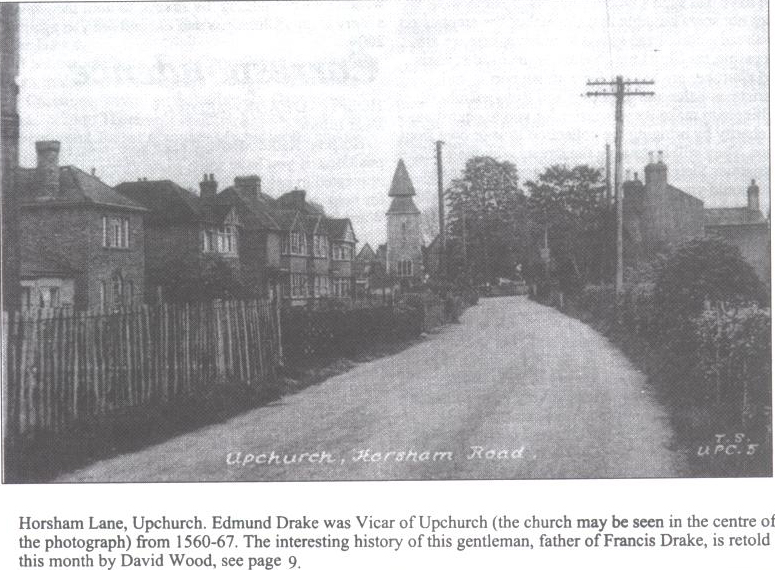The Last Will and Testament of Edmund Drake
Vicar of Upchurch 1560-1567
Edmund Drake became vicar of Upchurch in 1560 during the reign of Elizabeth 1st and is famous mainly because of his son Sir Francis Drake who became a famous seaman and helped defeat the Spanish Armada.
Edmund’s last will and testament dated December 25th 1566 was written the day before he died in Upchurch. He opens the will with the words that he is redeemed by the blood of Christ and commits his soul into the hands of God. He then states that he wishes to be buried in Upchurch churchyard beside his son Edward who died in infancy and next to the graves of the Blechenden family. A marked grave does not exist in the churchyard today so the exact location remains unknown.
With regard to Edmund’s immediate family the will only mentions Thomas who was the youngest of several brothers. There were twelve children in total but some died in infancy while others were away at sea like Francis, John and Joseph. Thomas was probably the only son still living nearby during Edmund Drake’s last days. Because of the bequests given to him Edmund may have wanted Thomas to follow him into the clergy.
In the will a wide range of items are bequeathed to Thomas including two chests of books, a new basin, an old platter, a collection of pewter dishes, a French pewter pot, Edmund’s best bible, four of his best candlesticks, his best kettles, his best feather bed, two pillows and five shirts. Edmund’s friend Mr Baker who is named overseer of the will is bequeathed one cock and seven hens while a relative named Richard Mylwaye is left Edmund’s chair and best cushion. All other items are left to Edmund’s nurse which indicates she had been looking after him for some time.
While Thomas Drake is designated the sole executor of the will, Clemente Mylwaye, another relative and Richard Sawell, a contemporary Upchurch resident witness it. Mr Baker who is mentioned is an old friend who lived in London and served as Clerk and Keeper of the Stores to the Admiralty and was looking after Edmund’s son Thomas.
Although Francis is not mentioned in the will, the date of Edmund Drake’s death indicates that he was a teenager at the time and probably already away at sea although evidence from the 16th century chronicler Edmund Howes indicates that he lived with the family of a relative named William Hawkins for a while in Plymouth but the exact date and length of time is not recorded. During the 16th century it wasn’t uncommon for children of families of lesser means to send their children to live with wealthier relatives.
Concrete evidence is not available about whether Francis went to sea while residing in Upchurch or in Devon or whether he went before Edmund became vicar of the village. Information that has passed down the generations by word of mouth in Upchurch is that Francis learnt seamanship on a small vessel based at the small village port of Otterham Quay and regularly sailed to the coast of Belgium while living in Upchurch and was also educated at home by his father but this cannot be proven with hard written evidence.
The Drake family accept that their ancestor is buried in the village churchyard and have had an association with Upchurch since Edmund’s death. This is shown in a letter dated November 4th 1935 sent to Reverend Lightburne, vicar of Upchurch from the Drake home at Buckland Abbey in Devon. The letter was written by Mrs. Seaton, daughter of Lady Eliot Drake, presenting her mother’s book ‘The Family and Heirs of Sir Francis Drake’ to the people of Upchurch. David Wood.










































































































































